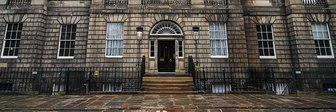What the story of Ireland at the end of the 19th Century can teach us about Scotland at the start of the 21st
With the benefit of hindsight, we now know the 2015 general election was a watershed election that set Scotland on the road to independence. Both the Labour and Conservative parties underestimated the hostility of Scottish voters to London’s politicians. The SNP won three in five seats in Scotland. Overnight, Labour went from being the dominant party to also-rans. It never recovered. For some years after 2015, the SNP used its strength to demand more powers for Holyrood, but eventually the demand for full independence could not be contained.
A wild prediction? Perhaps. But it’s also precisely what happened before. For Scotland, read Ireland. For Labour and SNP, read the Liberals and Home Rule League. For 2015, read 1874.
Before 1922, Ireland was part of the United Kingdom. Until 1868, its politics were dominated by the Liberals and Conservatives, with the Liberals usually having more MPs. William Gladstone, Prime Minister of the reforming 1868 Liberal government, responding to pressure from Ireland, passed the Irish Land Act. This gave tenant farmers more security. He also disestablished the Irish church.
These measures pleased nobody. Landowners felt let down, while many tenant farmers and other less well-off voters felt the reforms did not go nearly far enough.
The first move came from the Protestant landowners. In 1870, together with Dublin’s growing middle classes, they formed the Home Government Association (HGA). Rather than accept reforms imposed by London, they preferred to go for self-government. In 1873 the HGA became the Home Rule League (HRL). This wider body, now backed by tenants farmers as well as landowners, proposed that Ireland should decide all domestic matters for itself, leaving London, with deciding foreign policy, running the British Empire and organising the UK’s defence.
Then came the 1874 election. Gladstone tried to stem the rising anti-London mood by offering judicial reform, but not home rule. His Tory opponent, Benjamin Disraeli, offered nothing. The HRL fielded 80 candidates (for Ireland’s 101 seats). In practical terms, the biggest domestic issues were the Irish Land Act, hated by the landowners, and the country’s expensive railways, hated by almost everyone else. The HRL offered the same remedy to both ills: home rule.
The result was emphatic. The HRL won 60 seats. The Liberals collapsed from 66 to just 11. The Conservatives held up better: down from 37 to 31. By 1885 there were no Liberal MPs left in Ireland. (Their subsequent peak was the glorious total of 3 Irish MPs in their 1906 Britain-wide landslide.)
From 1874 until the First World War, debates about Irish Home Rule intermittently dominated Westminster. The issue was only settled – perhaps half-settled is a better term, when the demand was raised from Home Rule to full independence after the 1916 Easter uprising, and 26 of Ireland’s 32 countries broke away from the UK in 1922.
As those unit trust advertisements say, past performance does not guarantee what will happen in the future. But recent polls in Scotland, by YouGov, Lord Ashcroft and others, suggest that the electoral parallels between Ireland in 1874 and Scotland this year could be uncannily close. So could the character of the coming campaign. One Irish historian, writing in the 1950s, said: “The elected home rulers were described as political adventurers or turn-coat liberals who had embraced the popular programme not out of conviction, but for the sake of being returned to parliament”. One could say much the same today about Labour’s view of the SNP.
Whether these parallels fill you with joy or dread depends on your point of view; and perhaps Westminster will respond with greater sensitivity than it did 140 years ago. But then, perhaps it won’t.
This commentary first appeared as a blog for Prospect. For peter Kellner’s other Prospect blogs, click here
Image: William Gladstone and his Cabinet of 1868, by Henry Barraud










